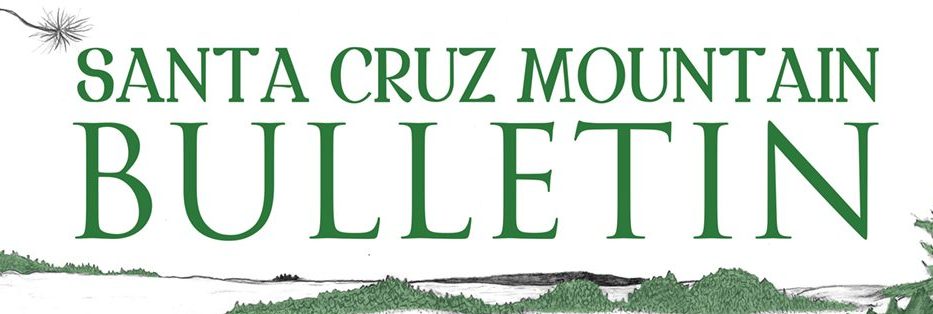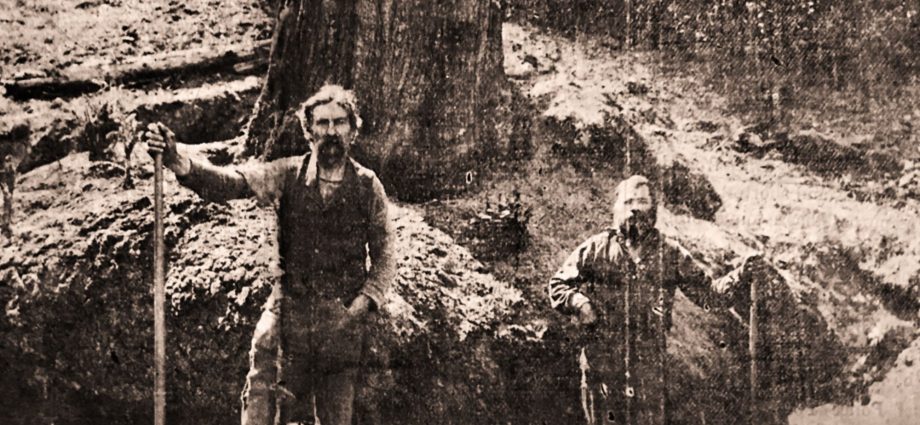Excerpt from the Mountain Echo, February 3, 1912
transcribed by Lisa Robinson
Sempervirens “Burl” Redwood is a vegetable growth that is rapidly disappearing, partaking much of the nature of a freak, and is pre-eminently a California vegetable monstrosity. It is never found other than under the ground, and only as the root of the “Sequoia Sempervirens.” Don’t confuse “Burl” with “curly redwood” or “birdseye”; “curly redwood” is a wavy grain of the wood split from the trunk of the tree; “birdseye” grows in the form of an excrescence or wart, on the trunk of the tree, above ground, and while it slightly resembles “Burl,” it is wholly lacking the beautiful effects of flowers, leaves and tracings of nature that appear in the grain of polished “Burl.” Both “curly redwood” and “birdseye” are found in all species of redwood, “Burl” only in the Sequoia Sempervirens. “Burl” grows like a turnip, in the ground; imagine a huge, oval-shaped turnip, from 6 to 20 feet across the top, and all the way from 2 to 7 feet deep, and you have a fair idea of the “Burl” as it is found in its native state. Boulder Creek is the only place on the Pacific Slope where the prospecting, mining and preparation of these monster freaks is carried on as a business. It was here their discovery was made, and it was established as a rival of eastern and foreign hardwoods for decorative, furnishing and finishing purposes, through the investigation and experiments of A. J. Baldwin, a Boulder Creek resident, and from whom it takes its name, “Baldwin Burl,” by which it is known to the trade. Baldwin’s Burl by Lisa Robinson In 1904, Andrew Jackson Baldwin, a redwood artist, noticed that there was a huge burl on the road to Big Basin. In fact, when the road first opened it ran right over the burl. Over the next twenty years, the traffic slowly eroded the soil and the burl became an obstruction. No one realized its value until it was examined by Baldwin. He negotiated a deal for its extraction with the owner of the land, Fannie Welch, and mined the enormous “turnip.” It was circular, twenty-seven feet in diameter and from one to three feet thick. In order to transport it to Joseph Peery’s sawmill it had to be cut into forty-three sections. It was estimated to yield 10,000 board feet of beautiful burl lumber; at half the going rate of $2 per board foot, that’s $10,000. Several of the milled boards were one and a half inches thick, two-feet wide and ten feet long, which he purportedly sold for saloon bar tops. The boards and planks were considered “the finest lot of burl redwood that has ever been cut in the state.”


